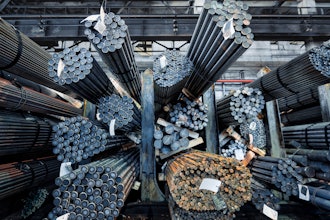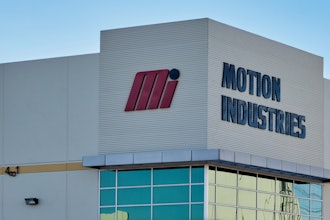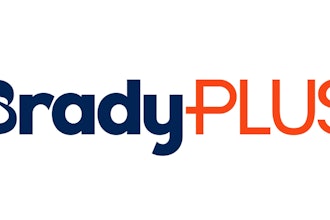This article appeared as part of Industrial Distribution's 2015 May/June print issue. To view the full digital edition, click here.
As is the case with more and more industrial products, ‘value-added’ is the constant buzz phrase. End users want to know what value they are getting out of a product besides just its intended purpose.
Cutting tools are at the forefront of this. In a market that has a seemingly infinite selection of brands for saws, saw blades, taps, drills, and end mills, successful brands make their product stand out. Phased out are the days of pure price gouging. Now, it’s all about quality. If your cutting tool does the job better and lasts longer than the competition, the end user sees that and will pay a bit more for value.
“The race to the bottom has found a winner, and it’s nobody,” says Emuge Corporation (West Boylston, MA) President Bob Hellinger. “We’ve always gone to market with a value-added proposition of price and performance. It’s not the price of our tool, it’s ‘how many parts do you produce?’ or ‘how does it cut cycle time?’”
“Before, everything was about price,” adds Rick Knutson, National Sales Manager at Imperial Blades in Sun Prairie, WI. “If someone could do a cheaper blade, that was your guy. That was the company you worked with. What I’ve seen now is customers not just looking at the initial price, but at the value.”
Imperial Blades has been in business for six years, beginning about the time the U.S. began pulling out of the recession. Knutson said the economic downturn helped escalate a shift in thinking to “this is cheaper, but I’m going through 10 times as much product.” In today’s market, value and quality win in the end.
Hellinger says that with distributors being consistently asked to show a product’s value, manufacturers are helping meet that need.
“Distributors are asking, ‘how can your tooling provide cost-savings?’ Manufacturers are going towards that philosophy,” he says. “There’s only so much you can do with the cost of the tool, but you can always improve its performance.”
Carbide
Leading the value push in cutting tools are developments in carbide. At any industrial products trade show, you’ll more than likely see cutting tool manufacturers showing off their latest carbide-equipped blades, taps, and mills. Carbide is nothing new to cutting tools – it’s been used for years to increase the hardness of material – but its application method continues to evolve.
At the Specialty Tools & Fasteners Distributors Association (STAFDA) annual convention last November in Charlotte, NC, Industrial Distribution attended a presentation held by manufacturer Diablo/Freud, where the company used live demonstrations to show off its new Carbide Tipped Metal Cutting Reciprocating Blade. The long life of the blade was made possible by Diablo’s formulated carbide teeth, attached with an enhanced bonding process for extreme impact resistance.
The latest trend is in using carbide powder, a process in which it is smashed together into an ultra-dense form, able to be shaped as needed. Normally, carbide is glued on, adhering a layer to an existing blade.“They had (carbide) on the tips of circular saw blades for a long time, but now the saw blades themselves are being made out of carbide,” Knutson says.
“The coatings for cutting tools is the area making the biggest difference now, allowing carbide tools to run at higher operating parameters than what was possible just 10 years ago,” adds Hellinger.
Hellinger says micro-layer coatings are becoming more widespread. With the layers becoming smaller and smaller, they are able to react in a more positive way to higher temperatures and are more abrasion resistant.
The end goal of infusing more carbide into cutting tools is the same as it’s always been with tool hardening over the years: reduce friction. Any time the friction can be lowered on a blade or drill, it can spin faster at a lower temperature, making it last longer, and making it more valuable overall.
Value-Added Opportunities
A popular value-added offering in the cutting tools industry is in tool repair and reconditioning. Being able to re-sharpen a tool multiple times and extend its life increases its value exponentially instead of buying a new tool every time it dulls. Hellinger said a growing trend is for manufacturers to offer this service in-house.
“Why offer reconditioning services? A high-performance carbide drill could cost between $50-250, and you don’t want to throw it away after one use. The user will want to recondition the tool if possible,” Hellinger says. “If they regrind the tool themselves, they might not get near the same performance as new. If they send the tool to a local regrind house, they may not be able to mimic the geometry correctly and the tool performance will suffer. Manufacturers are starting to offer their own reconditioning service so the end user can get a factory-certified regrind.”
Distributors are in on the action as well. In the regrind room at independent distributor John Day Company (Omaha, NE), a carbide steel gear cutting hob – costing $2,500-4,000 brand new – can be sharpened 16-20 times for $250-300 each time. Such a service can be extremely valuable.
As far as other value-added opportunities for distributors, Knutson says end user education is the most prominent, as misuse and uneducated customers are always a problem.
“A lot of people in the industry are not very aware. The consumer market is really dumbing down people,” he says. “You really have to make it super simple for them to pick and choose the right product. I call it pointand-grunt: ‘There’s my tool. There’s my blade.’ Maybe it’s a color chart, a picture, something a third grader could look at and know what it does. Maybe point-of-purchase materials. It’s a little degrading, but if you’re not making it dumbed down, people look away.
“Most people in the oscillating tool industry, 90 percent, don’t know how to use the tool. Unbelievable.”Knutson doesn’t hold himself above the consumer. He recalled how when he fi rst got in the business, he would “just buy something that had the most teeth,” because he was admittedly uneducated about the decision-making process. Distributors and end users need to consider teeth patterns and what the material is made of if they want to get the most out of their dollar.
What’s Next?
Hellinger and Knutson both say that a trend that is likely to carry on through 2015 in cutting tools is brand consolidation — distributors and hardware stores are looking to carry fewer brands of the same tool, instead of having as many known brands as they can. The more brands a store carries, the harder it is to display them properly.
“People are backing up the truck and going, ‘how come I have this junkyard of a spot in my store that has eight different brands?’” Knutson says. “The industry in general is coming to the table and looking at all the lines in a streamlined approach: ‘What do I really need? Do I really need 10 oscillating brands, when I can have just one that will cover everything?’”
Market Consumption Update
The latest figures from the U.S. Cutting Tool Institute showed that February U.S. cutting tool consumption totaled $179.3 million, down 2.3 percent from January’s total, but up 1.6 percent year-over-year from February 2014. Association For Manufacturing Technology analysis said that the decrease mirrored the same pattern as U.S. manufacturing of durable goods, and that January and February surpassing last year’s totals are positive conditions, considering the fi rst quarter faced adversity of harsh weather conditions and a strong dollar in a weakening global economy.






















